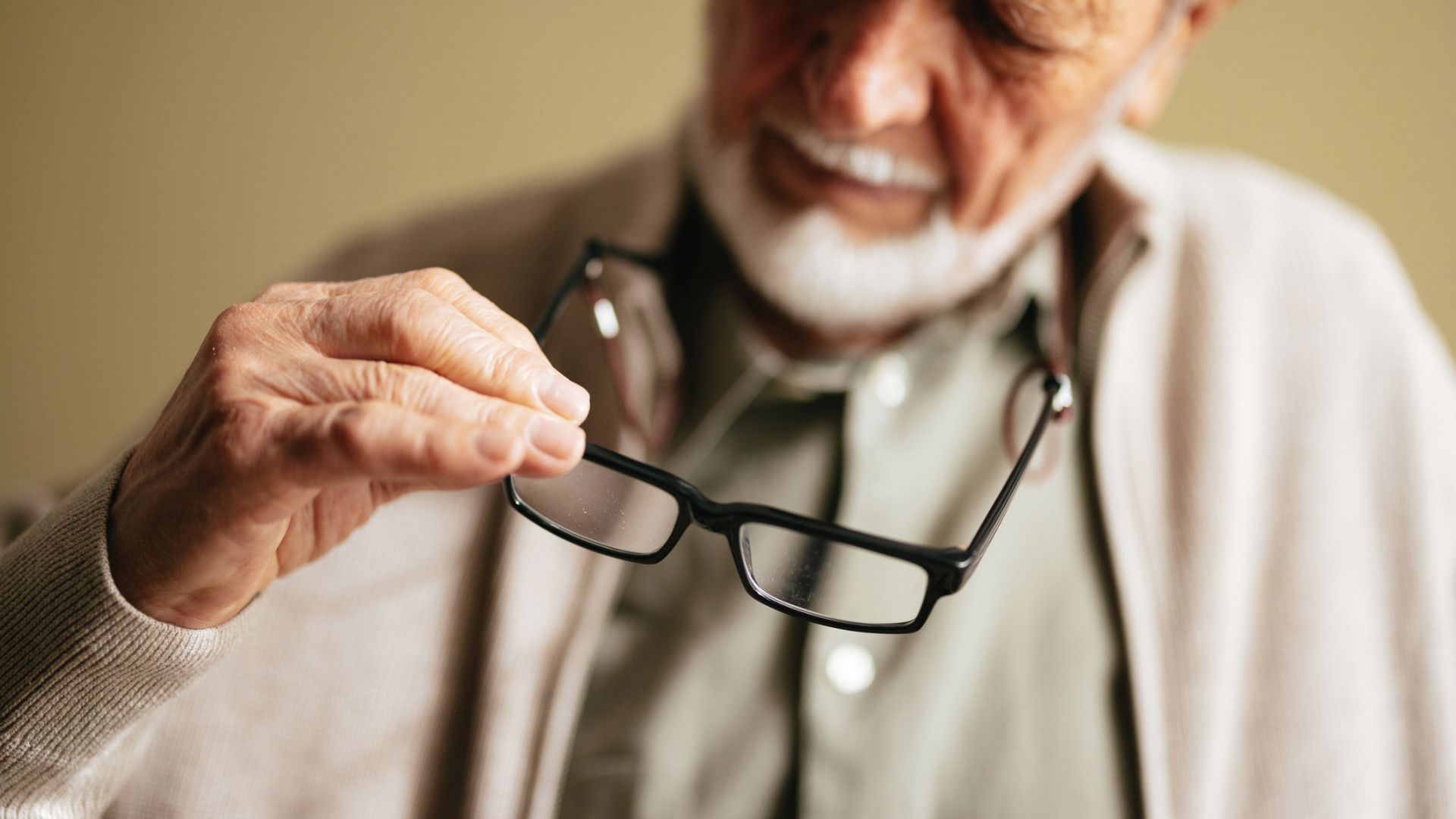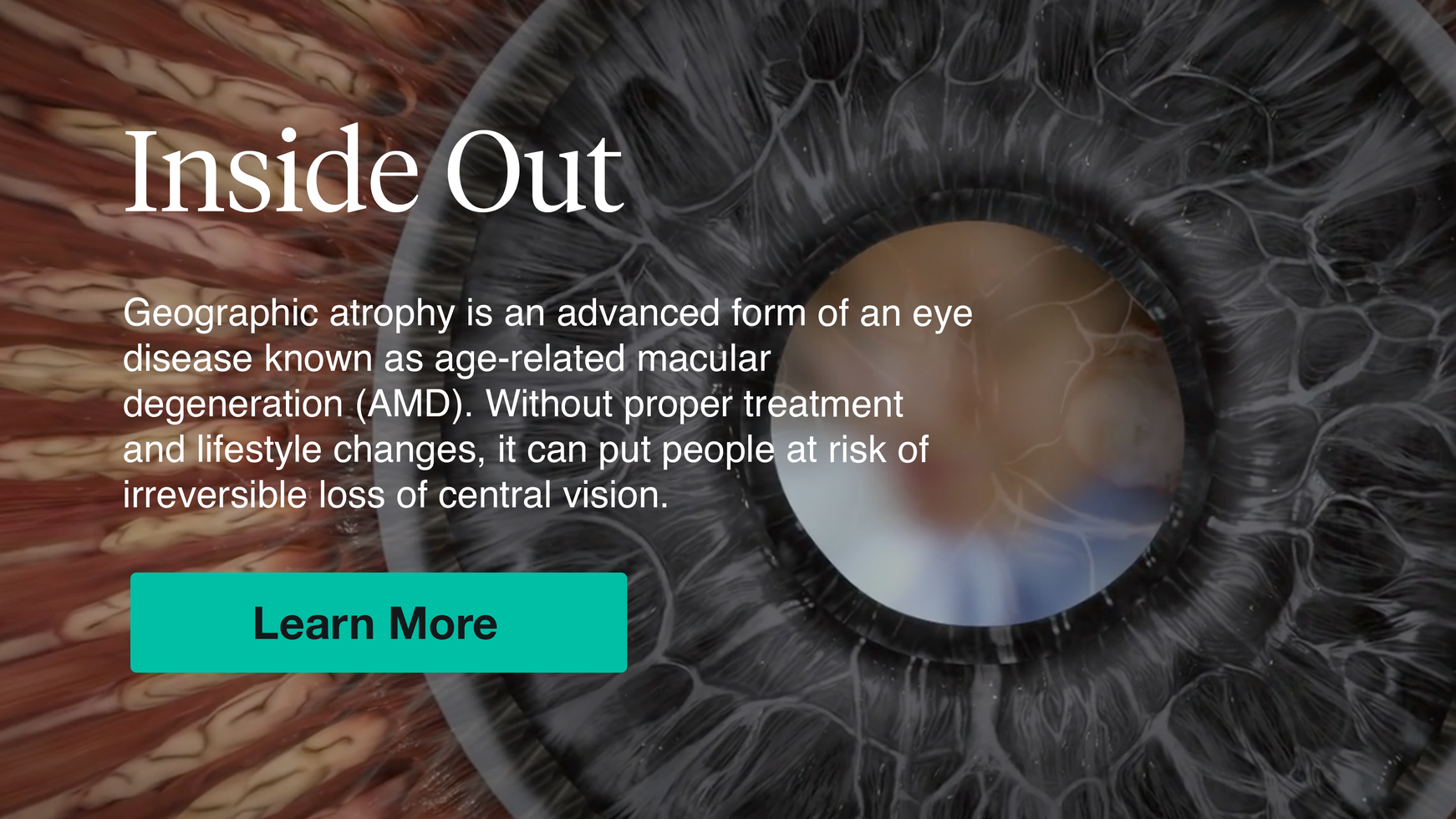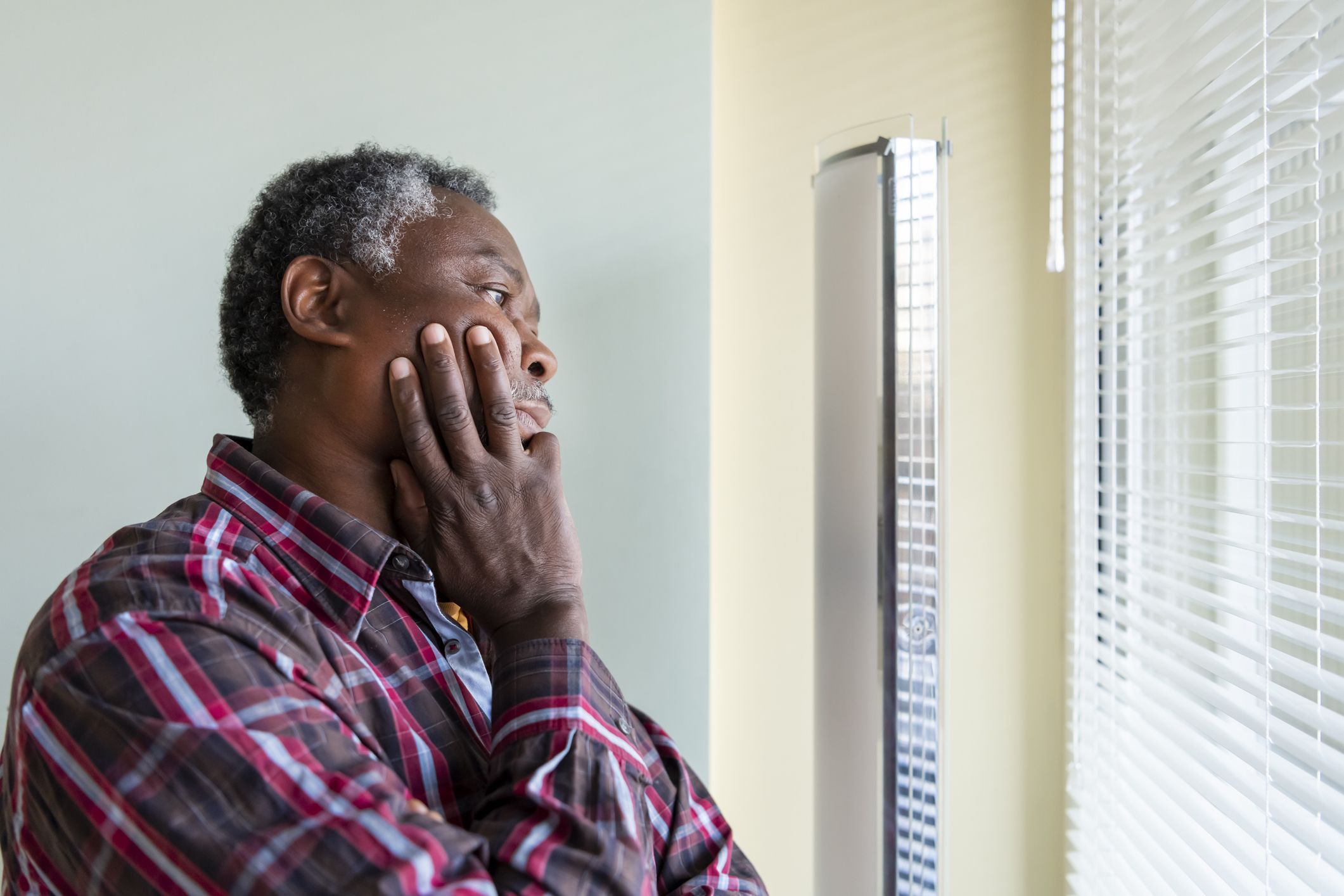One of the most difficult parts of living with any condition that causes vision loss is the ways that it impacts your quality of life—your ability to work, to take care of your home and your health, to do things you enjoy, to help your friends and loved ones when they need a favor.
Quality of life should be an important focus of treatment for geographic atrophy, an advanced form of dry age-related macular degeneration (AMD).
Understanding geographic atrophy
Like other forms of AMD, geographic atrophy affects the macula, the layer of photoreceptor cells located at the center of the retina in the back of the eyeball. These are the cells that convert light that enters the eyeball into nerve signals that then travel to the brain.
With geographic atrophy, photoreceptor cells begin to deteriorate and die. As this deterioration spreads to nearby cells, it forms clusters of dead cells. These clusters resemble geographic features on a map, which is where geographic atrophy gets its name.
Geographic atrophy causes central vision loss. Objects you are looking at may appear blurred or out of focus. There may be dim or dark spots in or near the center of your vision. Numbers or letters may appear missing when reading, and you may have difficulty seeing in dim lighting.
Geographic atrophy and quality of life
Although geographic atrophy is a different experience for everyone, it’s not difficult to imagine the many ways that central vision loss can impact a person’s quality of life.
The first and most important step is to work with an eye doctor—if you are experiencing symptoms and haven’t discussed them with an eye doctor, make an appointment as soon as possible. If you are already working with an eye doctor, keep working with your eye doctor.
In addition to discussing your symptoms, it’s important to discuss the ways that these symptoms are impacting your life. This is a big question to think about, and is perhaps best broken down into smaller more specific questions:
- What tasks have become more difficult because of vision problems?
- Is there anything you’ve stopped doing—or started doing less—because of your vision problems?
- Do you ever avoid going out? Have you had to adjust your schedule?
- Have vision problems affected your moods and emotions? Do you find yourself sad, frustrated, or angry as a result?
- Have you made any changes around your home to accommodate vision problems?
- Has vision loss affected your relationships or friendships?
- Have vision problems affected other aspects of your health?
- Do you feel less safe because of vision loss?
- How would life be different with better vision?
Answering these questions can help you define and describe your experience with geographic atrophy—and help you and your healthcare providers determine specific treatment goals you can work toward.
Treatment for geographic atrophy
A major focus of treatment is vision rehabilitation. This involves working with a healthcare provider who specializes in ways to maximize your current vision and find effective ways for working around tasks that are made difficult by the vision loss you’ve experienced.
The goal is to help you remain as independent as possible, and to allow you to keep doing the things that are important to you. Think of it as physical therapy for your eyes.
While there is no cure for geographic atrophy, and there are currently few treatment options, there are treatments under development. These include medications, gene therapies, and cell-based therapies. It may be worth talking to your eye doctor about a clinical trial.





